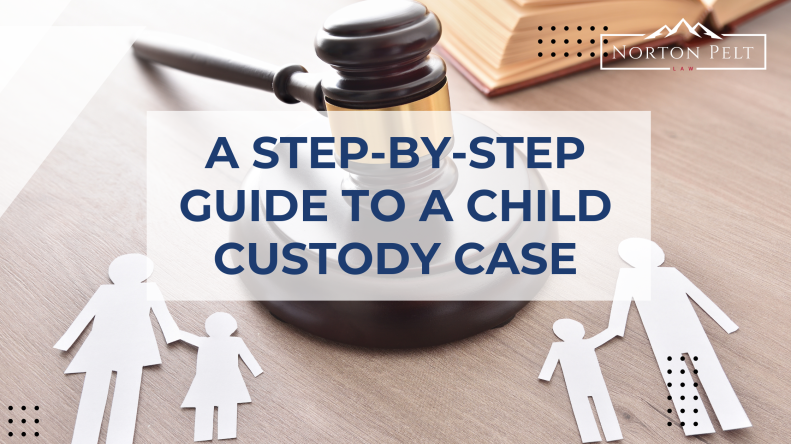Navigating child custody after a divorce can feel overwhelming, especially when the well-being of your children is at stake. In the United States, family courts prioritize the child’s best interests while balancing parental rights. Whether you’re seeking joint custody, sole custody, or modifications to an existing arrangement, understanding the legal landscape is crucial. This guide breaks down the essentials of child custody laws, the decision-making process, and practical tips to help you move forward with confidence.
Understanding Child Custody Basics
Child custody refers to the legal and practical relationship between parents and their children following a separation or divorce. It’s not just about where the child lives—it’s about decision-making authority, daily care, and long-term support. U.S. laws emphasize cooperative parenting to minimize disruption for kids, with a growing trend toward shared arrangements.
Types of Child Custody
There are two primary categories of custody: legal custody and physical custody. Legal custody grants parents the right to make major decisions about the child’s education, healthcare, religion, and welfare. Physical custody determines where the child primarily resides.
- Joint Custody: Both parents share responsibilities equally or as agreed. This can be joint legal, joint physical, or both.
- Sole Custody: One parent has primary decision-making power or physical residence, with the other receiving visitation rights.
Legal vs. Physical Custody
Legal custody focuses on authority over big-picture choices, while physical custody deals with everyday living arrangements. Many states presume joint legal custody is in the child’s best interest unless evidence shows otherwise, such as abuse or neglect. Physical custody can be split 50/50 in shared models, which have risen from 13% in the 1980s to 34% in recent years.
The Best Interest of the Child Standard
At the heart of every custody decision is the “best interest of the child” doctrine, a principle adopted by all 50 states. This standard ensures rulings promote the child’s physical, emotional, and psychological health rather than favoring one parent. Courts evaluate stability, safety, and the child’s needs above all else.
Factors Courts Consider in Custody Decisions
Judges weigh multiple factors to determine custody, tailored to each case. Common considerations include:
- The child’s age, health, and emotional bonds with each parent.
- Each parent’s ability to provide a stable home, including work schedules and living conditions.
- Any history of domestic violence, substance abuse, or neglect.
- The child’s preferences, especially if they’re old enough (typically 12 or older, depending on the state).
- Siblings’ relationships and the feasibility of maintaining them.
Evidence like parenting plans, witness testimony, and custody evaluations from professionals often influences outcomes.
The Process of Determining Child Custody
Custody is typically addressed during divorce proceedings, but it can be filed separately. Parents are encouraged to reach agreements outside court to save time and reduce conflict.
Mediation and Negotiation
Most states require mediation before a hearing, where a neutral third party helps parents craft a parenting plan. This outlines schedules, holidays, and communication rules. Amicable agreements are approved quickly by the court.
Court Hearings
If parents can’t agree, a judge decides after reviewing evidence. Temporary orders may apply during the process to ensure immediate stability, including interim custody and support. Full hearings can take months, so preparation is key—gather documents and consider consulting a family law attorney.
Joint Custody vs. Sole Custody: Pros and Cons
Joint Custody Pros: Fosters ongoing parental involvement, models healthy co-parenting, and shares financial burdens. It’s ideal for cooperative ex-spouses.
Joint Custody Cons: Requires strong communication; logistical challenges like transportation can arise.
Sole Custody Pros: Provides consistency and simplifies decisions for the child.
Sole Custody Cons: May limit the non-custodial parent’s role, potentially leading to resentment or emotional strain.
Trends show a shift toward joint physical custody when feasible, reflecting evolving views on equal parental roles.
Modifying Child Custody Arrangements
Life changes—like relocation, job loss, or a parent’s improved circumstances—can warrant modifications. You must prove a “substantial change” in conditions and that the new arrangement serves the child’s best interests. Courts scrutinize requests to avoid instability, so document everything thoroughly.
Parental Rights and Responsibilities
Both parents retain rights to access school records and medical info, regardless of custody type. Responsibilities include financial support via child support orders, calculated by state guidelines based on income and custody time. Non-payment can lead to enforcement actions like wage garnishment.
State Variations in Child Custody Laws
While the best interest standard is universal, states differ in presumptions and processes. For example, some like California favor joint custody, while others require proof of unfitness for sole awards. Always check your state’s statutes—resources like state bar associations provide summaries.
Resources for Divorcing Parents
- American Bar Association: Free guides on custody and support.
- Custody X Change Software: Tools for creating parenting schedules.
- Local Family Courts: Offer self-help centers and low-cost mediation.
- National Domestic Violence Hotline: Support for abuse-related cases (1-800-799-7233).
Seek professional advice early to protect your rights.
FAQs
What is the most common child custody arrangement in the US?
Joint legal custody is the most common, with shared physical custody increasingly popular at around 34% of cases.
How long does it take to finalize child custody in a divorce?
It varies: 1-3 months for agreed plans, up to a year for contested cases.
Can grandparents get custody after a divorce?
Yes, if it’s in the child’s best interest and parents are unfit, though it’s rare.
Does adultery affect child custody decisions?
Generally no, unless it directly impacts the child’s welfare, like exposing them to unsafe situations.
What if one parent wants to move out of state with the child?
This requires court approval; relocation laws protect the other parent’s access rights.
Remember, every family’s situation is unique. Consult a qualified attorney for personalized guidance tailored to your state’s laws.
